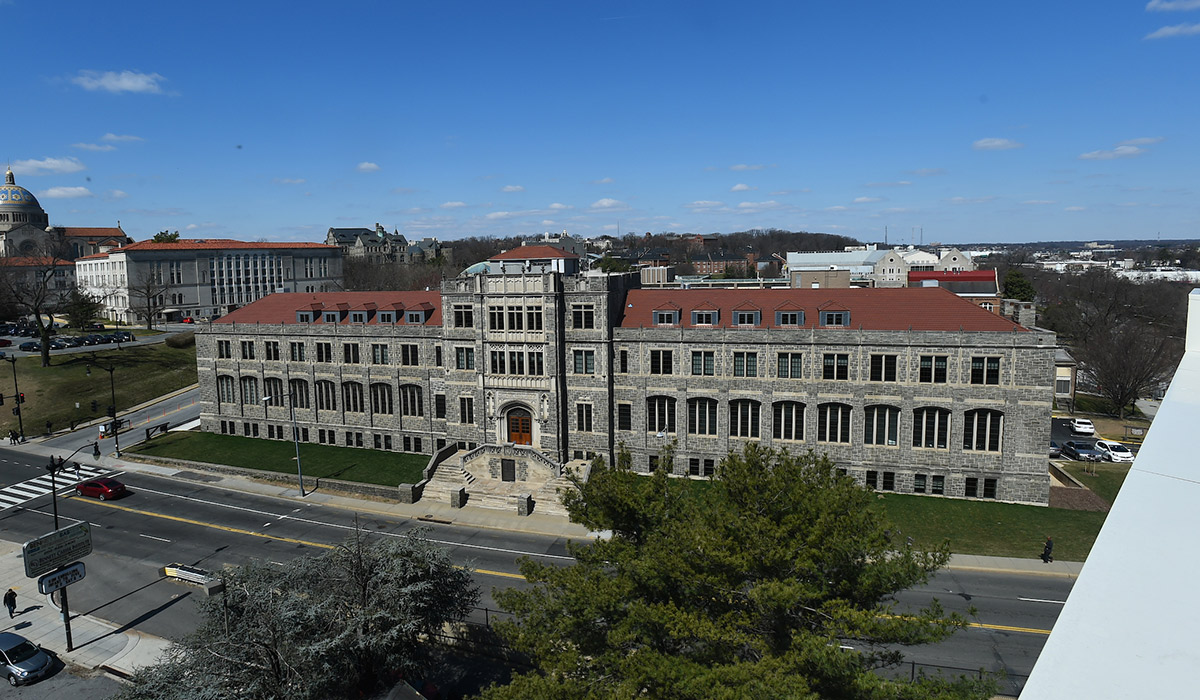

Maloney Hall, the recently renovated home to the Busch School of Business, has been awarded LEED (Leadership in Energy and Environmental Design) Gold certification from the U.S. Green Building Councils (USGBC). LEED certification recognizes best practices in sustainable design. In the United States, 36% of LEED-certified buildings are awarded Gold, the second highest level.
Originally built in 1917 (with the auditorium added in the 1920s), the more than 60,000 square foot Maloney Hall is a prominent historic building, located near two of the University’s main entrances.
“It is so wonderful to share and celebrate achievements like this that demonstrate the University’s commitment to sustainability,” says Debra Nauta-Rodriguez, associate vice president for Facilities Planning and Management and University Architect. “We owe our gratitude to the staff, consultants, and contractors who worked so hard to make this happen.”
The Maloney Hall renovation was completed with sustainability in mind. During the renovation, Facilities Planning and Management focused efforts on reducing construction and demolition waste and retaining and reusing as much of the original structure as possible. During construction, 92% of the construction waste was recycled, and 91% of structural elements remained.
To save water, the building includes an extensive rainwater recovery system and low-flow bathroom fixtures. Landscaping features such as native plants and trees were carefully chosen to not rely on permanent irrigation systems.
For the health and wellness of occupants, the building was completed with low VOC (volatile organic compounds) paints and other wall finishes. For energy-saving measures, efficiency was prioritized in the HVAC systems and LED fixtures installed throughout the entire building. Automatic lighting controls, daylighting sensors, thermostats, and carbon dioxide monitors were placed strategically. Overall, the building was designed to perform 22% better than the energy code standard.
“Achieving LEED Gold shows our outward commitment to industry best practices,” says Alexandra Harry, assistant director of Campus Facilities and Sustainability Initiatives. “Maloney Hall's environmentally friendly design and operations help set the critical framework for the University to achieve its sustainability goals.”
Maloney Hall is one of three University buildings that are LEED certified. The University’s newest residence hall, Opus Hall, was designed to meet LEED standards. It is 10.5% more energy-efficient than average residence halls and its water fixtures are 20% more efficient than standard indoor plumbing fixtures.
The Edward M. Crough Center for Architectural Studies is noted as the first student-led LEED certified building. It was certified in 2014 as a result of a LEED Lab course created by Associate Professor Patricia Andrasik. She and her students monitored the building and how it was used and recommended more efficient services like lighting and controls, plumbing, a rain garden and cisterns, and building management processes. Andrasik’s course was adopted by the USGBC to serve as a model for similar courses at other schools.
The University is pursuing LEED certification for Father O’Connell Hall. In addition, the Dining Commons and new residence halls have LEED certification goals.